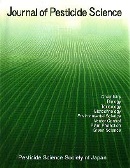Volume 30, Issue 4
Displaying 1-19 of 19 articles from this issue
- |<
- <
- 1
- >
- >|
Review
-
2005 Volume 30 Issue 4 Pages 345-353
Published: 2005
Released on J-STAGE: November 29, 2005
Download PDF (212K)
Original Articles
-
2005 Volume 30 Issue 4 Pages 354-360
Published: 2005
Released on J-STAGE: November 29, 2005
Download PDF (441K) -
2005 Volume 30 Issue 4 Pages 361-367
Published: 2005
Released on J-STAGE: November 29, 2005
Download PDF (124K) -
2005 Volume 30 Issue 4 Pages 368-377
Published: 2005
Released on J-STAGE: November 29, 2005
Download PDF (266K) -
2005 Volume 30 Issue 4 Pages 378-383
Published: 2005
Released on J-STAGE: November 29, 2005
Download PDF (428K) -
2005 Volume 30 Issue 4 Pages 384-389
Published: 2005
Released on J-STAGE: November 29, 2005
Download PDF (652K) -
2005 Volume 30 Issue 4 Pages 390-396
Published: 2005
Released on J-STAGE: November 29, 2005
Download PDF (795K) -
2005 Volume 30 Issue 4 Pages 397-402
Published: 2005
Released on J-STAGE: November 29, 2005
Download PDF (672K)
Notes
-
2005 Volume 30 Issue 4 Pages 403-405
Published: 2005
Released on J-STAGE: November 29, 2005
Download PDF (102K) -
2005 Volume 30 Issue 4 Pages 406-408
Published: 2005
Released on J-STAGE: November 29, 2005
Download PDF (118K) -
2005 Volume 30 Issue 4 Pages 409-413
Published: 2005
Released on J-STAGE: November 29, 2005
Download PDF (110K)
PART II (IN JAPANESE)
Abstracts for Original Articles
-
2005 Volume 30 Issue 4 Pages 415-417
Published: November 20, 2005
Released on J-STAGE: June 08, 2014
Download PDF (253K)
Commentary
-
Article type: Commentary
2005 Volume 30 Issue 4 Pages 418-425
Published: November 20, 2005
Released on J-STAGE: June 08, 2014
Download PDF (461K)
Letter to Members
-
Article type: Letter to Members
2005 Volume 30 Issue 4 Pages 426-427
Published: November 20, 2005
Released on J-STAGE: June 08, 2014
Download PDF (179K)
Book Review
-
2005 Volume 30 Issue 4 Pages 428
Published: November 20, 2005
Released on J-STAGE: June 13, 2014
Download PDF (139K) -
2005 Volume 30 Issue 4 Pages 429-432
Published: November 20, 2005
Released on J-STAGE: June 08, 2014
Download PDF (165K)
-
2005 Volume 30 Issue 4 Pages 433-435
Published: November 20, 2005
Released on J-STAGE: June 13, 2014
Download PDF (28K) -
2005 Volume 30 Issue 4 Pages 436-437
Published: November 20, 2005
Released on J-STAGE: June 13, 2014
Download PDF (29K) -
2005 Volume 30 Issue 4 Pages 439-444
Published: November 20, 2005
Released on J-STAGE: June 13, 2014
Download PDF (51K)
- |<
- <
- 1
- >
- >|
